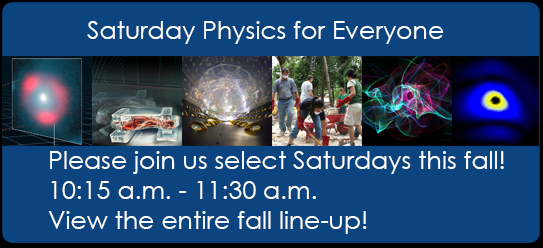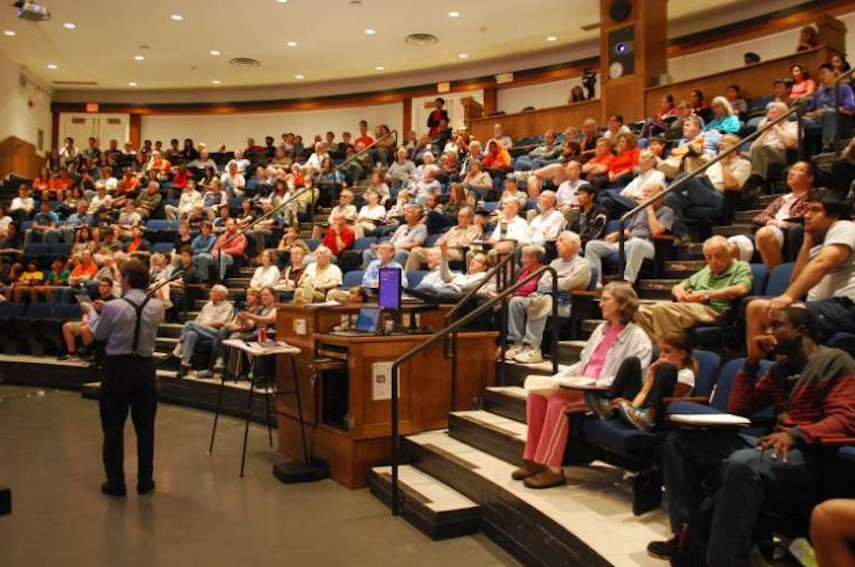Many people, myself included, have little understanding of physics. To us, the Right Hand Rule applies to driving a car; condensed matter has something to do with canned milk; and Brownian Motion is what happens after being fed baked goods laced with Ex-Lax. Physics, to laypeople like myself, feels in many ways like the most complex and difficult to understand of the hard sciences. However, physics need not be an impenetrable fortress reserved for only Mensa members and Nobel Laureates.
Since 1993, U of I has hosted a series of lectures entitled Saturday Physics for Everyone intended to make physics accessible to those not actively involved in the field. Although originally geared for high school students, the lectures are engaging and unpatronizing, making them the perfect Saturday treat for anyone interested in learning a little bit more about how our universe works.
While each talk tends to focus on a small part of the field, the variety of topics is fairly broad, ranging from cosmological discussions about the very first galaxies in existence, to explorations into the feasibility of constructing biomachines, to general explanations about how the scientific method is applied in the real world. Especially appealing is the fact that it isn’t necessary to attend all of the previous lectures in a season in order to understand and enjoy one later on in the series.

The upcoming lecture, “I’m Beginning to See the Light: Properties and Applications of our Friendly Photons”, will be presented by U of I Professor of Physics Paul G. Kwiat and will dive headfirst into defining and explaining the fascinating properties of light and its applications in a myriad of fields including medicine, entertainment, commerce, and, yes, physics. In addition, this Saturday’s talk boasts 19 different light-based demonstrations designed to make the ideas more concrete, including measuring the speed of light in real-time.
The follow-up lecture (and the last one of the year) will continue the discussion of light, or more specifically, the building block of light in U of I Physics Professor Virginia Lorenz’ “How to Train Your Photon”. Professor Lorenz’ short lecture will culminate with a tour which will allow the audience may see some of the ways that photons are utilized and science takes place in laboratories of the Physics Department at U of I.
These two lectures about light and photons are especially poigniant as 2015 has been declared the International Year of Light and Light-based Technologies by UNESCO (the United Nations Educational, Scientific, and Cultural Organization). The distinction comes partly due to the fact that 2015 is the 150th anniversary of the publishing of James Clerk Maxwell’s A Dynamical Theory of the Electromagnetic Field, in which the four equations now known simply as “Maxwell’s Equations” first appeared. Maxwell’s equations laid the foundation for all of today’s light-based theory, research, and technology.

The Saturday Physics for Everyone lectures are completely free and open to the general public. They occur on certain Saturdays in the Fall at 10:15 a.m. in room 141 of the Loomis Laboratory of Physics at 110 West Green Street in Urbana. The next lecture is Saturday, November 7th. The final lecture of this season is December 5th.
For more information, see the Saturday Physics web site.
Images are courtesy of physics.illinois.edu








